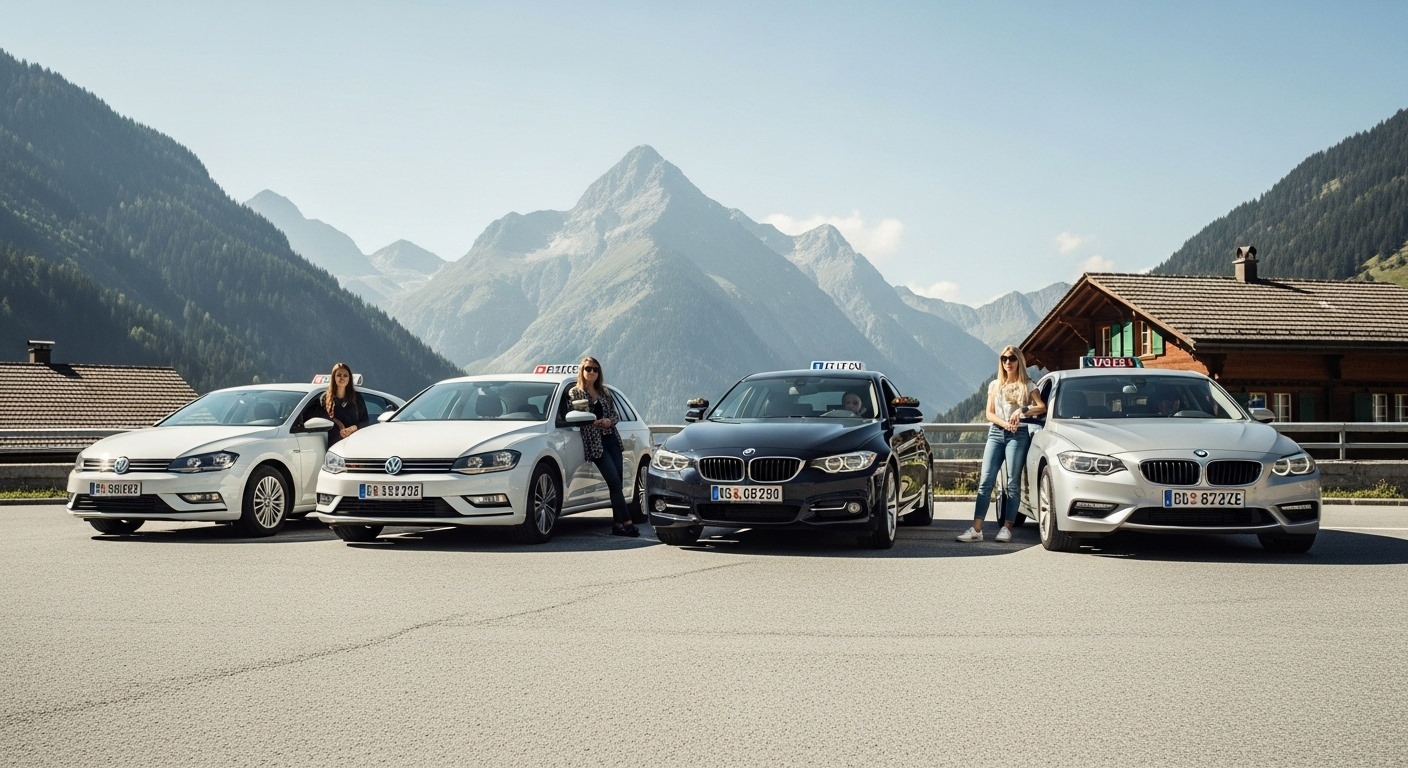Cross-border driving can present a challenge for many Swiss drivers, particularly when it comes to the diverse traffic rules and regulations in neighboring countries. The allure of quickly crossing national borders by car is often overshadowed by a tangle of laws that can feel contradictory and disproportionate. It is a delicate dance along the border – a daring drive between freedom and fines.
Switzerland and Its Neighbors: A Salad of Rules
Why is traveling by car in Europe so complicated, especially for Swiss drivers? Crossing the border into Germany, for example, introduces a completely different traffic penalty system. In France, missing a stop sign can result in a hefty fine, while in Italy, even the smallest infraction can lead to exorbitant penalties. Austria, on the other hand, can frustrate with its often perceived as disproportionate speed limits.
The Big Comparison: What to Expect
Let us uncover the key differences and surprises that Swiss drivers can expect in neighboring countries:
- Speed Limits: While Swiss highways have a limit of 120 km/h, some sections of German highways can become a stage for speed enthusiasts. However, beware: there is a speed limit catch!
- Blood Alcohol Limits: In Switzerland, the limit is 0.5‰, while in Italy it is as low as 0.3‰ for novice drivers. Austria conducts strict checks, which can make a leisurely wine evening in Burgenland quite costly.
- Fines: While fines in Switzerland are high but often transparent, the penalty system in France is notorious for its arbitrary punishments.
- Equipment Regulations: In Switzerland and most neighboring countries, it is mandatory to carry a warning triangle and a reflective vest. In France, an alcohol testing device must also be available in the vehicle – a rule many consider a nuisance.
German Precision or French Chaos?
Germany, the land of autobahn dreams, stands in stark contrast to the strict French traffic regulations. A colleague from Zurich recently recounted being flashed at an inconspicuous intersection on a trip to Lyon, despite behaving correctly – an experience not unfamiliar to many Swiss.
Pitfalls on German Roads
Germany may be known for its “free driving for free citizens,” but the truth is that many sections are regulated, and a misunderstanding can quickly lead to costly fines. Swiss drivers should not be lulled into a false sense of security – German “precision” also applies to adherence to the rules.
France: The Unpredictable Neighbor
Driving in France is akin to an adventurous odyssey. Different rules, depending on the region and city, from nighttime speed controls to peculiar parking regulations, await those trying to find a parking spot in Paris.
Italy: La Dolce Vita or Traffic Chaos?
Italy entices with picturesque landscapes and culinary delights, yet Italian traffic can quickly become burdensome with its chaotic conditions. An incredible set of rules around ZTL (Zona Traffico Limitato) can be an unpleasant surprise even for experienced drivers. Entering these zones without permission results in high penalties.
Austria: The Underestimated Rule Keeper
In Austria, not only is the view of the alpine panorama impressive – adherence to strict traffic rules is also significant. Speed limits and high fines for violations make the journey through the mountains a balancing act between freedom and compliance. In the Alps, it is particularly important to take the winter tire requirement seriously, as the weather can change abruptly.
Comparison Table of Traffic Regulations in Neighboring Countries
A quick look at the main differences between the countries:
- Switzerland: 120 km/h on highways, 0.5‰, high fines
- Germany: No limit on many highway sections, 0.5‰
- France: 130 km/h on highways, 0.5‰, arbitrary fines
- Italy: 130 km/h on highways, 0.3‰ for novice drivers
- Austria: 130 km/h on highways, 0.5‰, high fines
Conclusion and Driving Advice
Cross-border driving can seem frustrating and complex, but with the right preparation, it becomes a manageable task. Always inform yourself in advance about the respective traffic rules and plan your journey diligently. The golden rule: Respect local regulations and avoid impulsive behavior. This way, every drive across the border becomes a safe and legally unproblematic experience. And do not forget: Driving experience and intuition are your best companions on these diverse roads of Europe.
